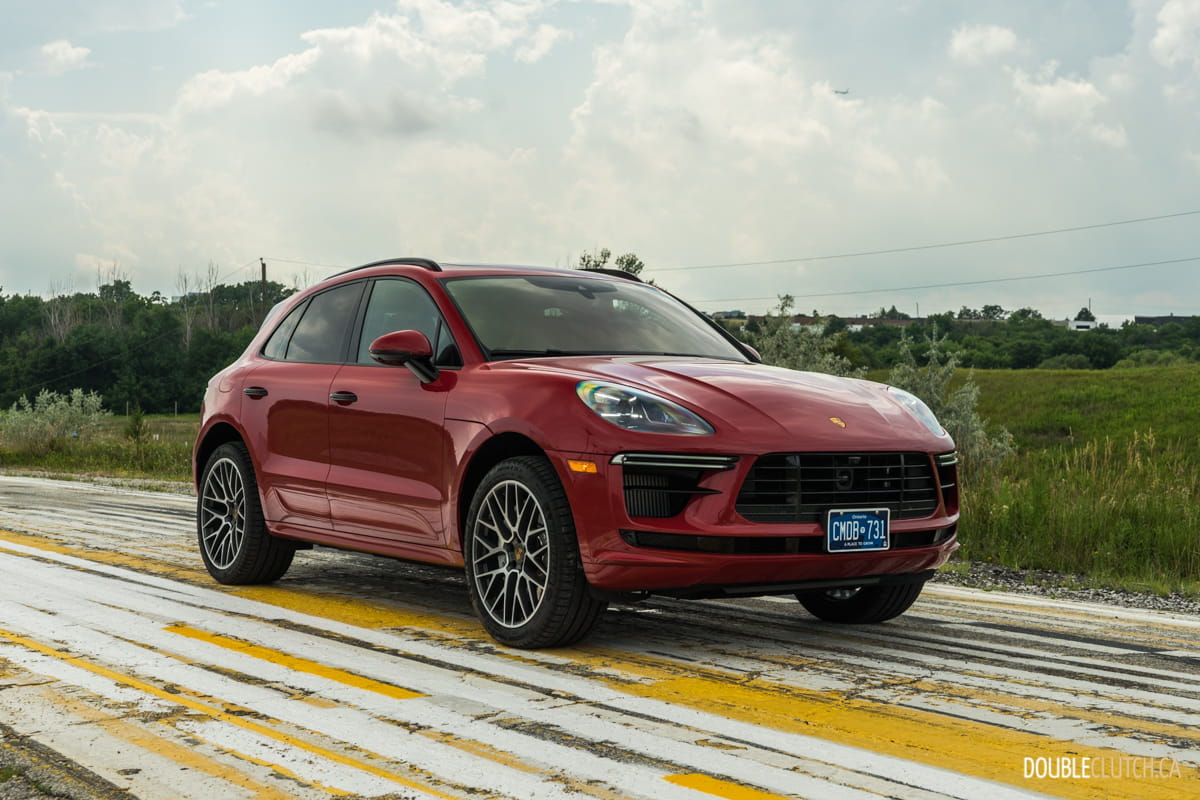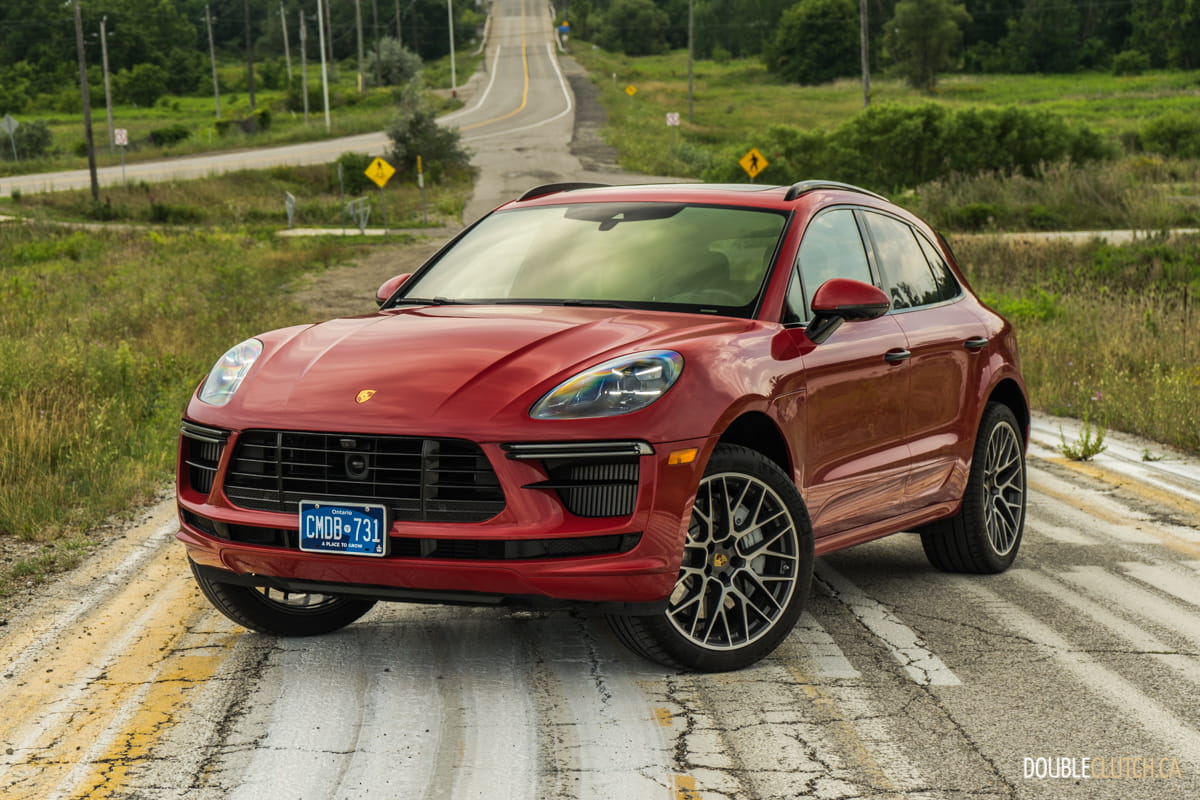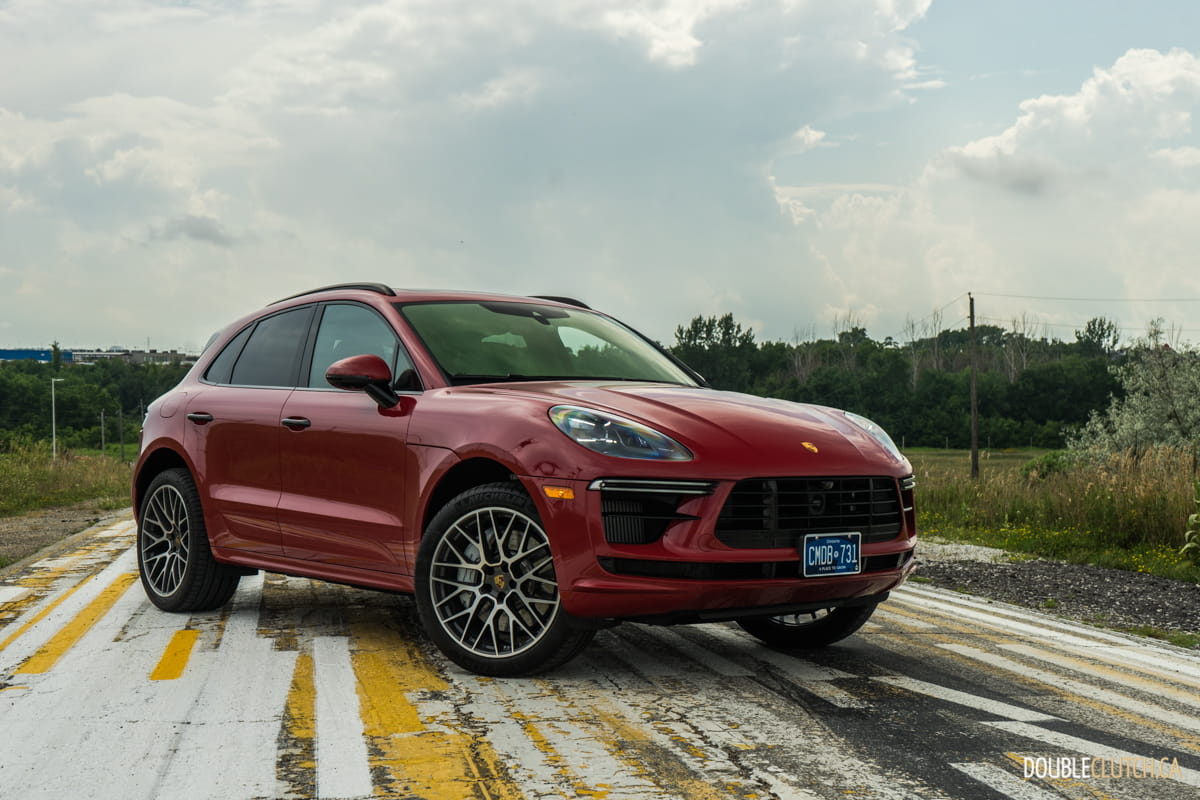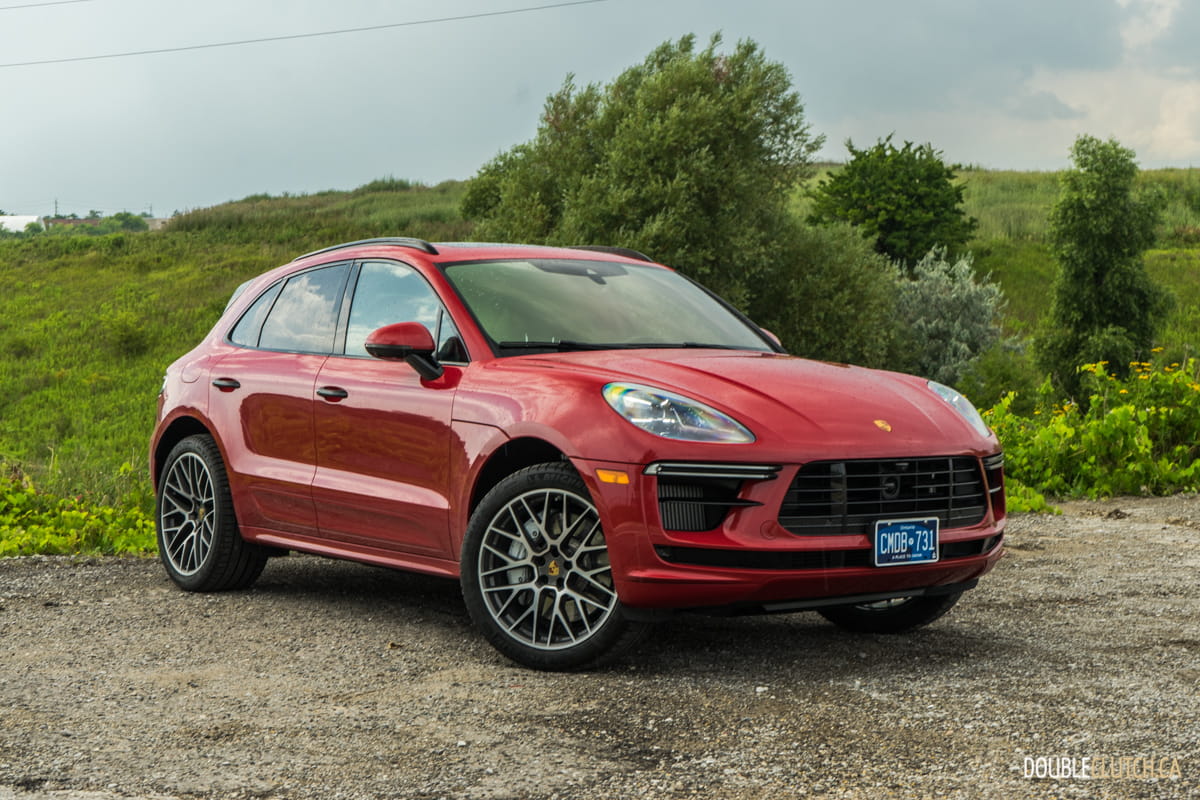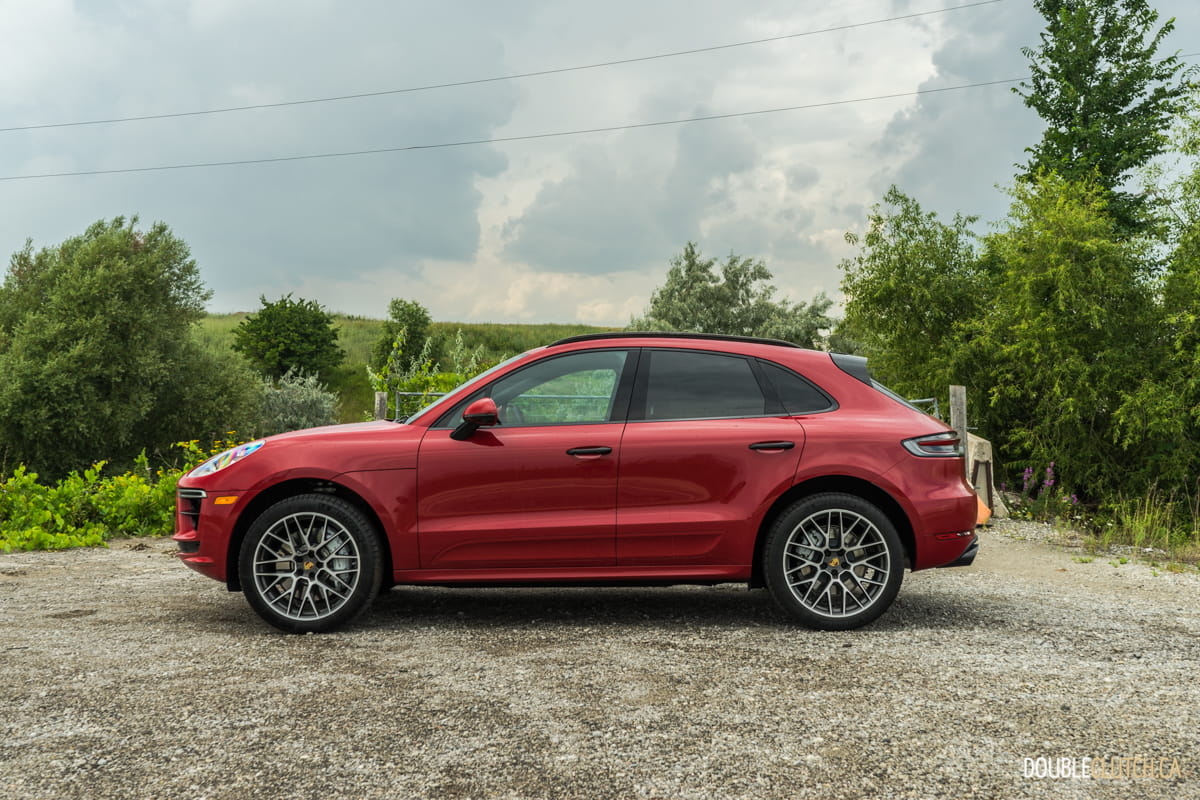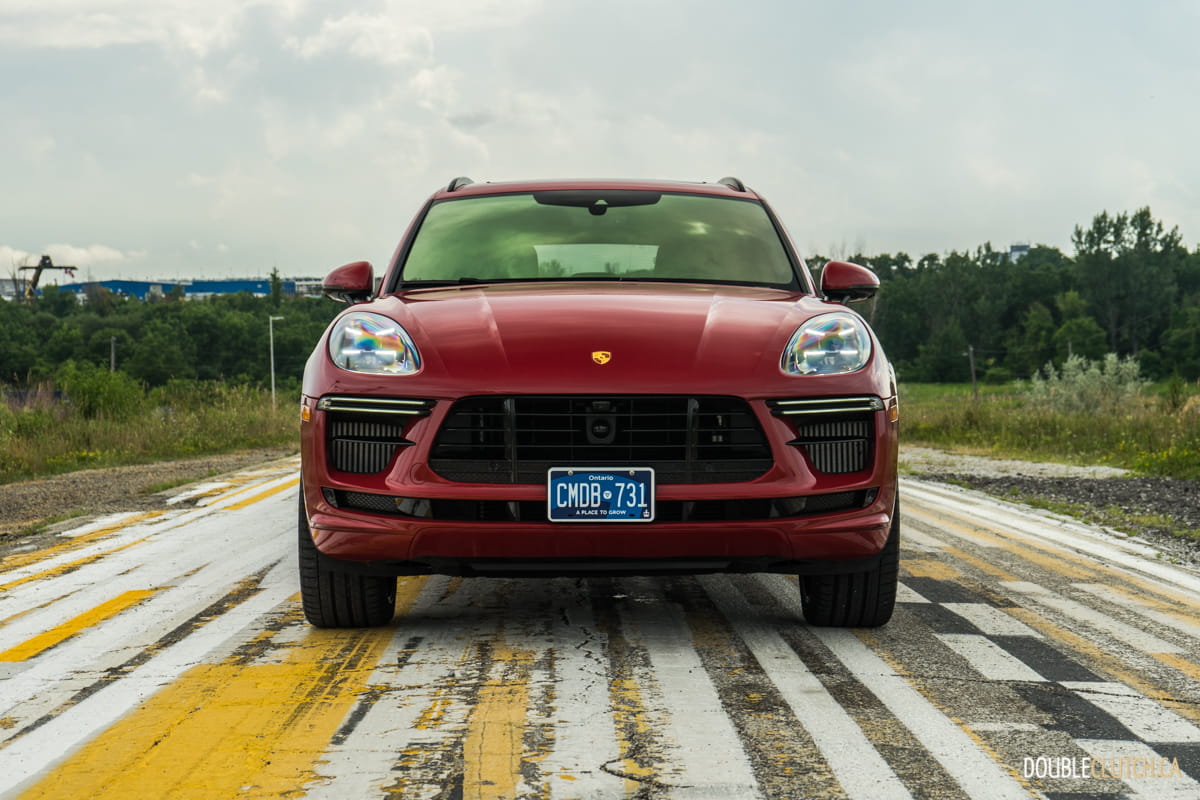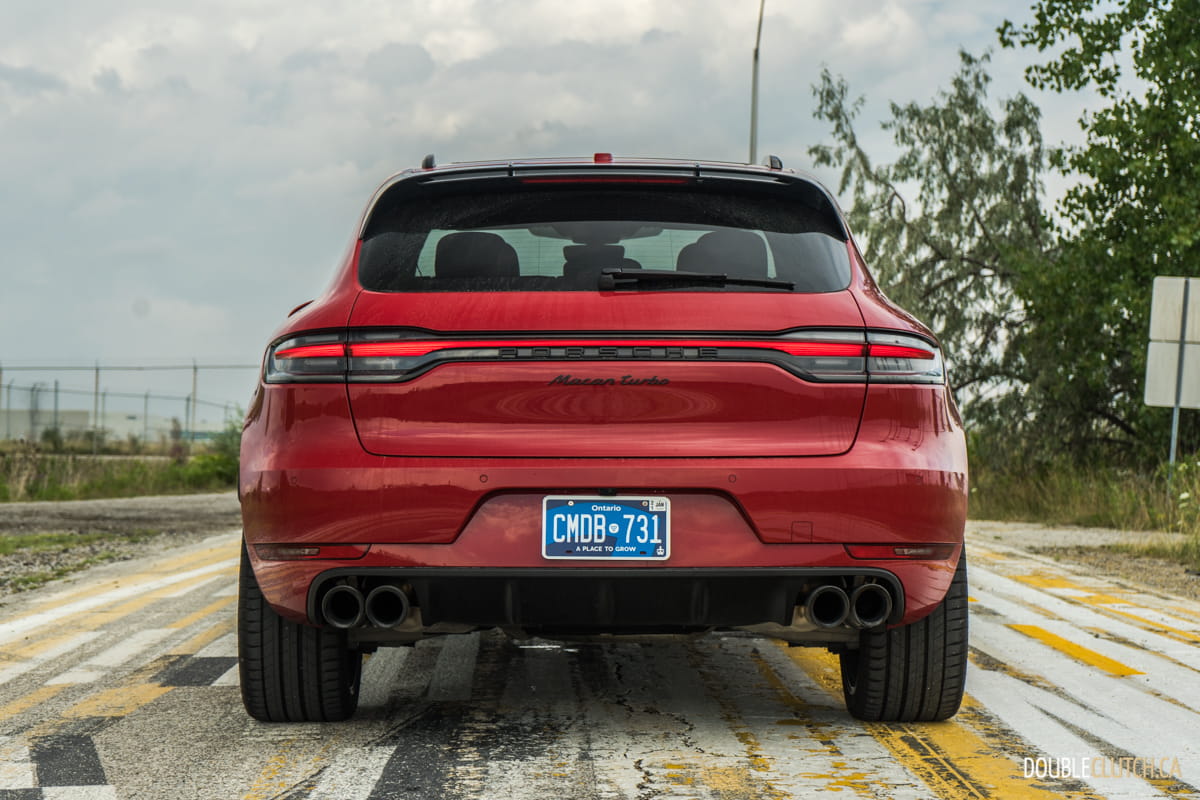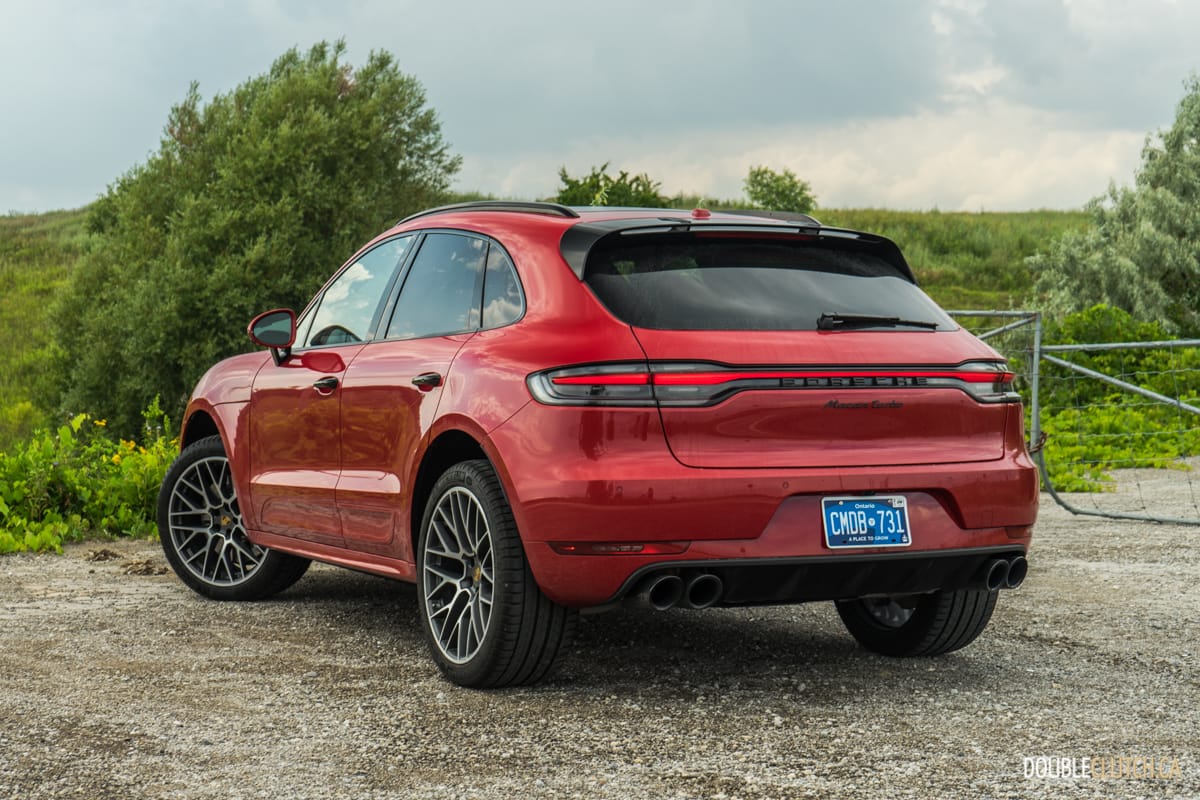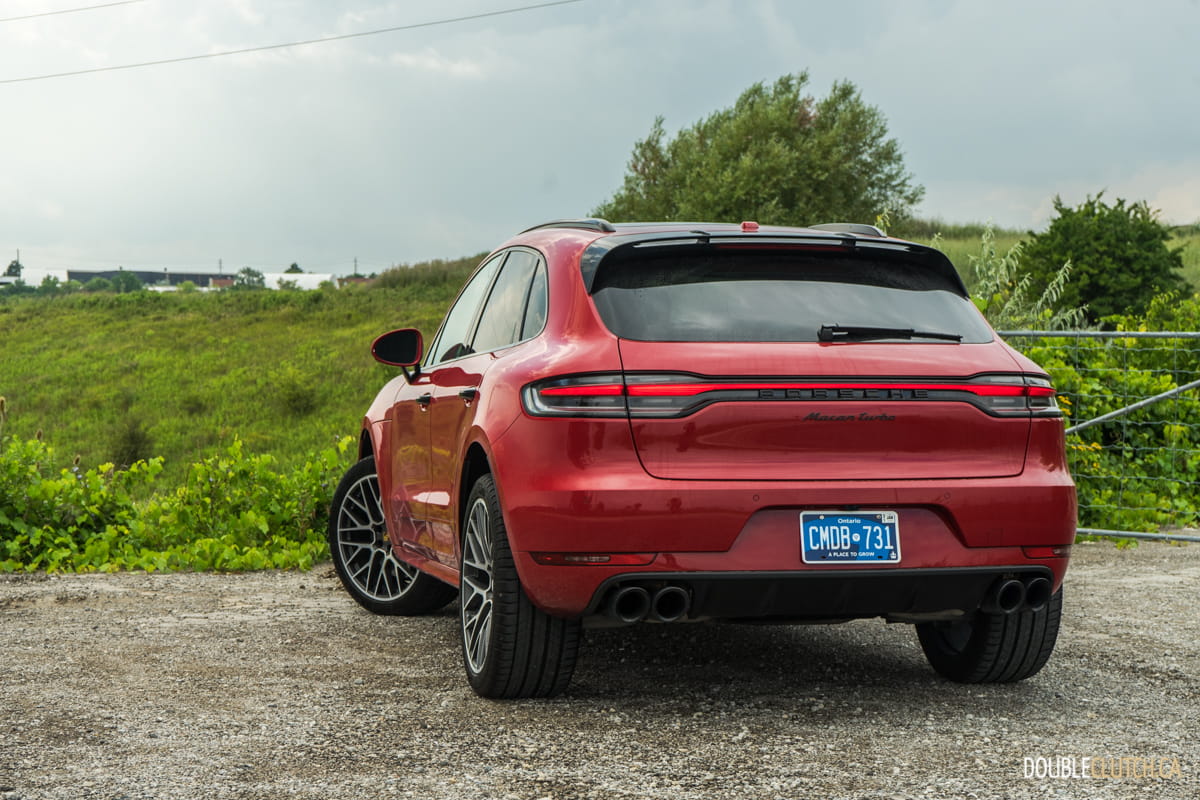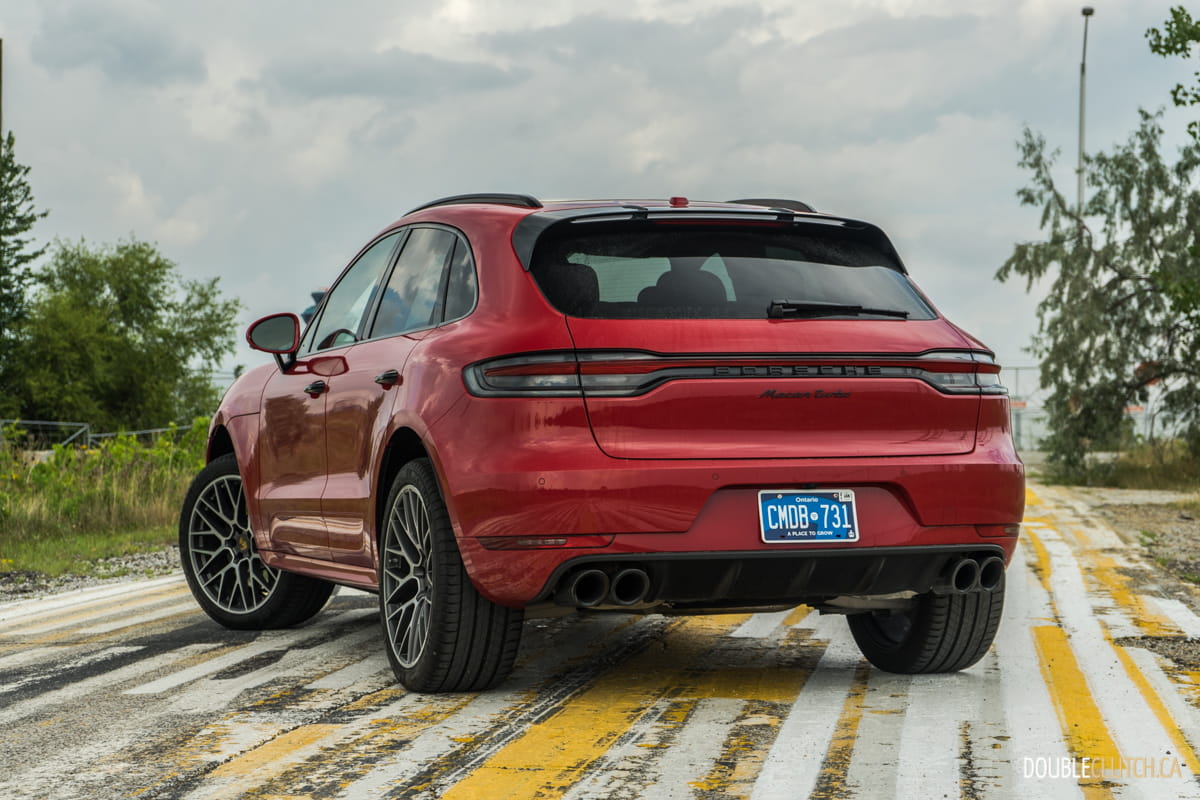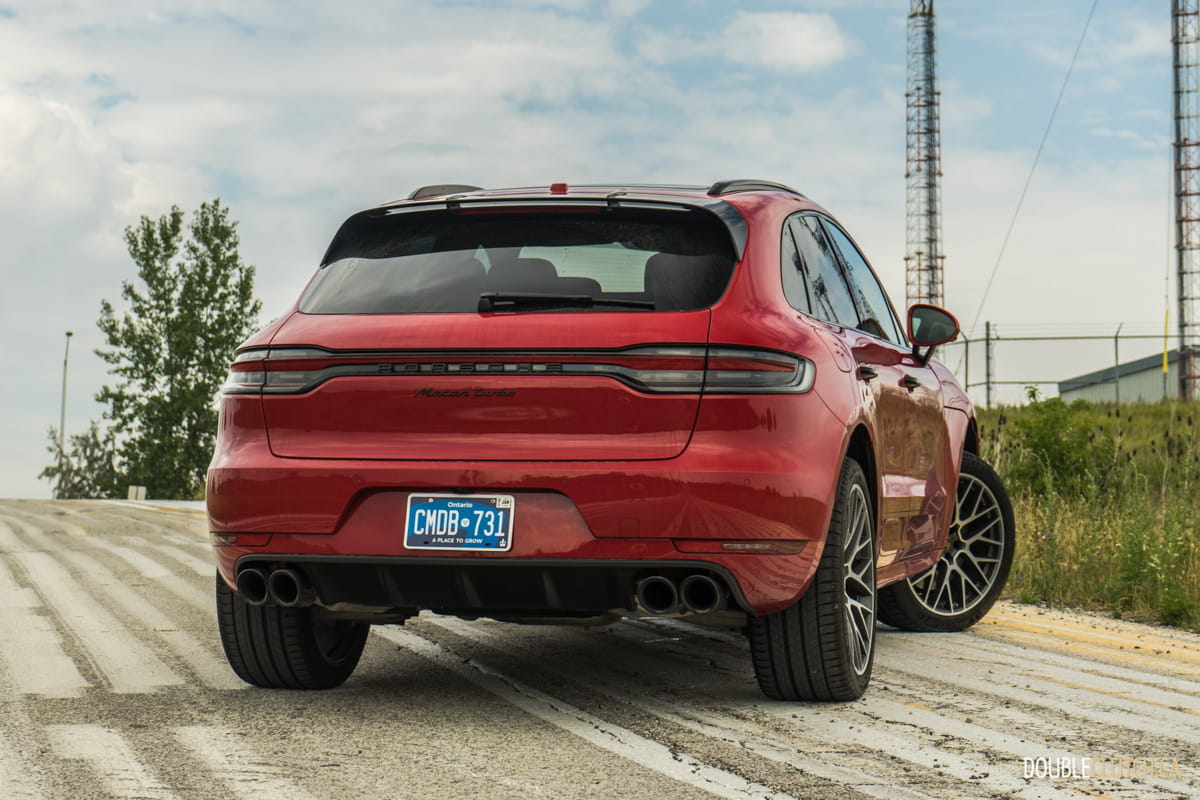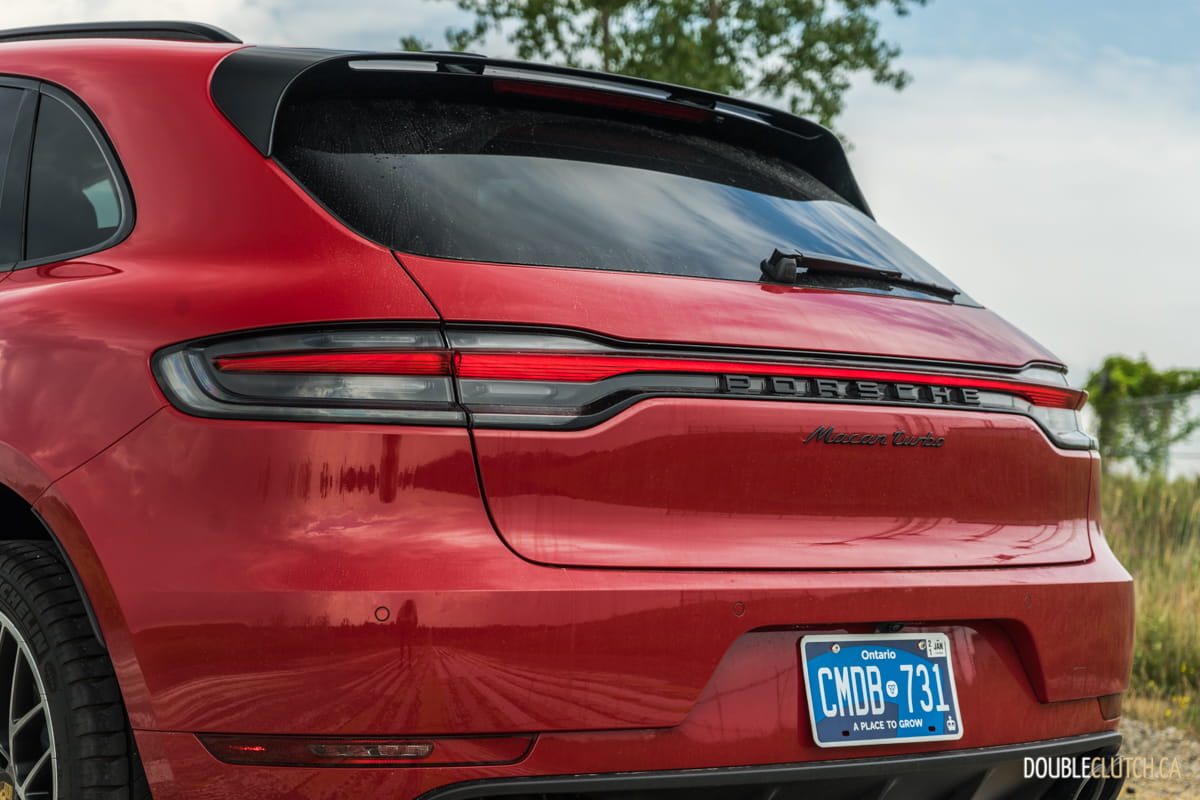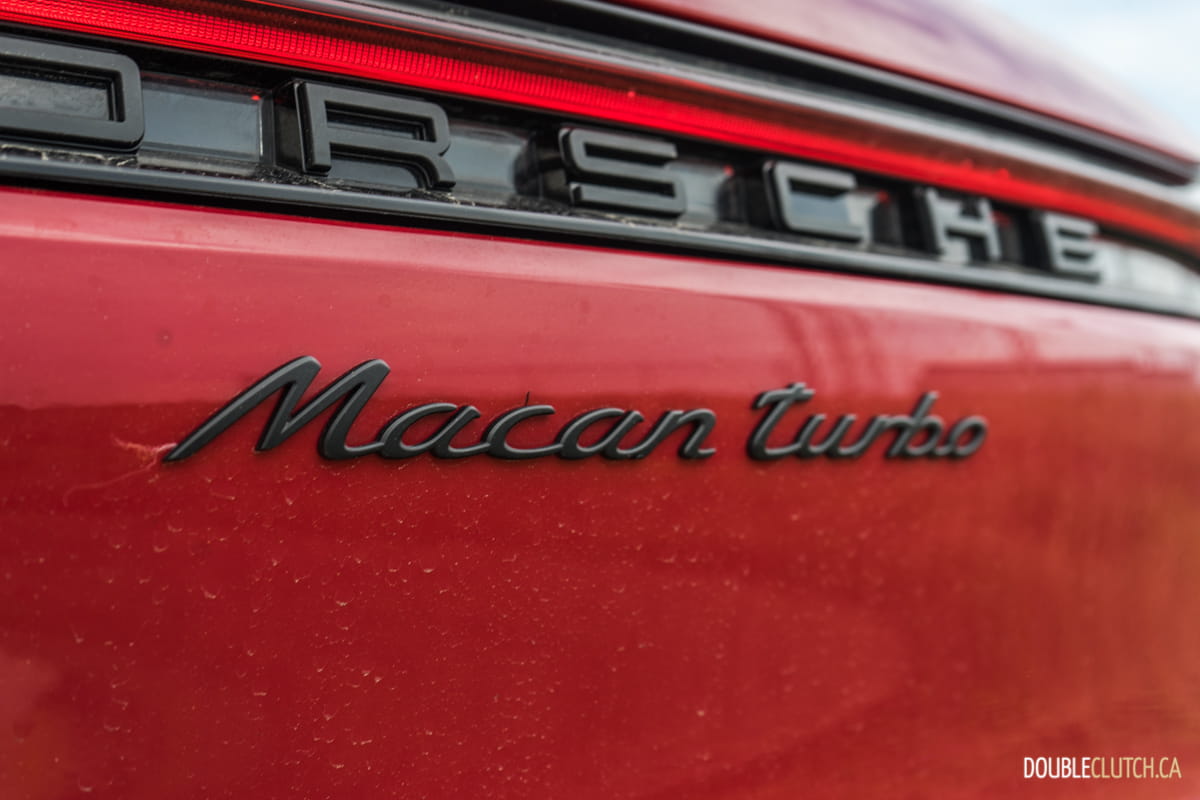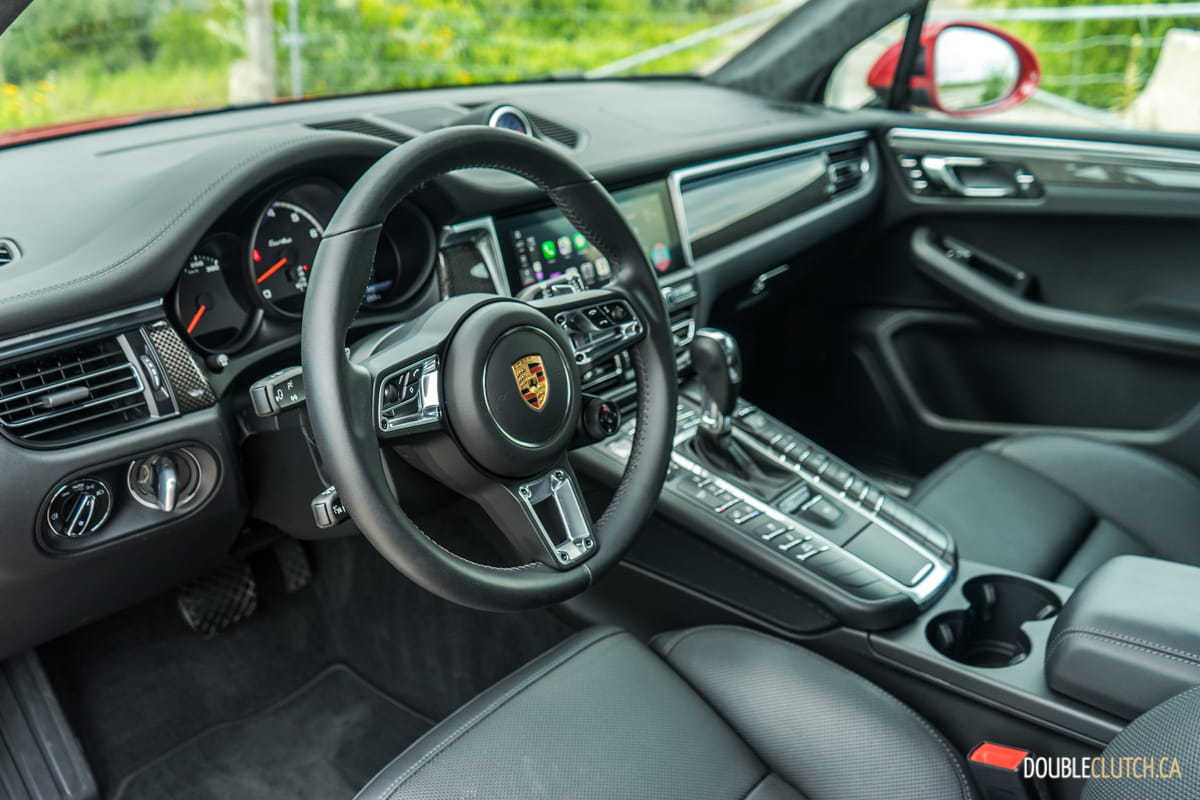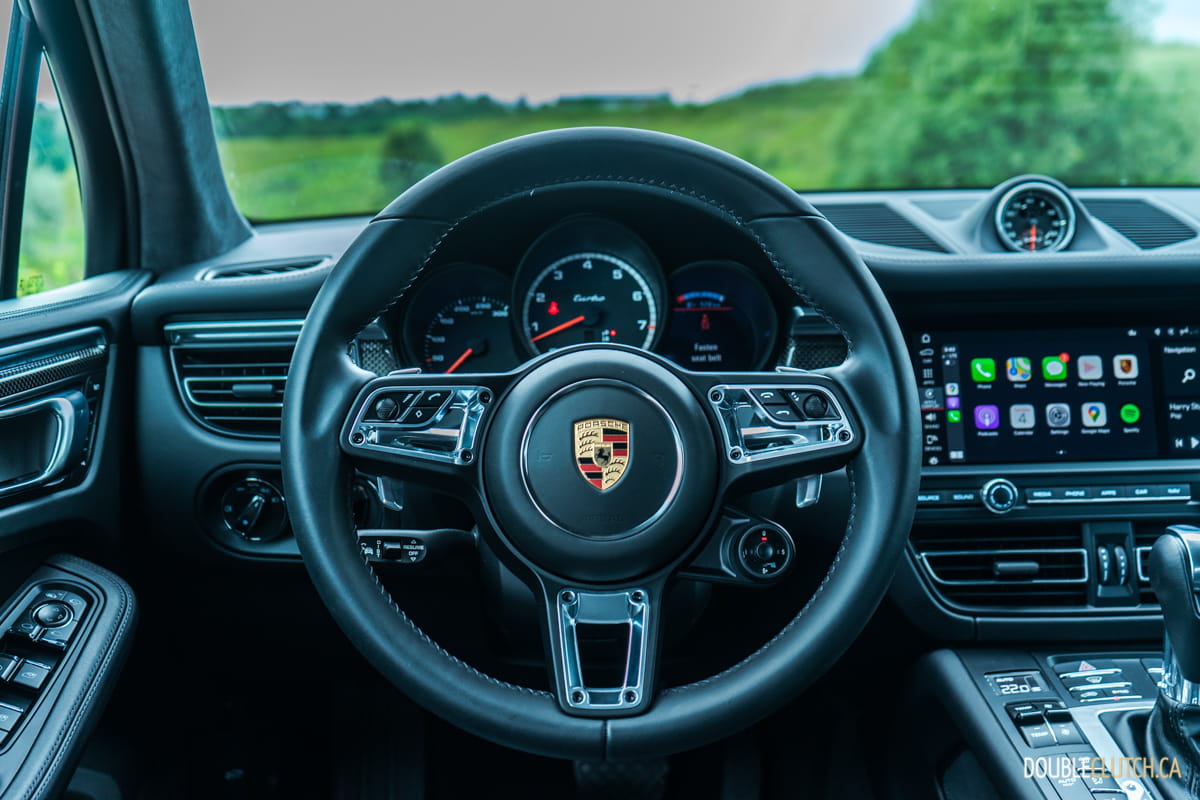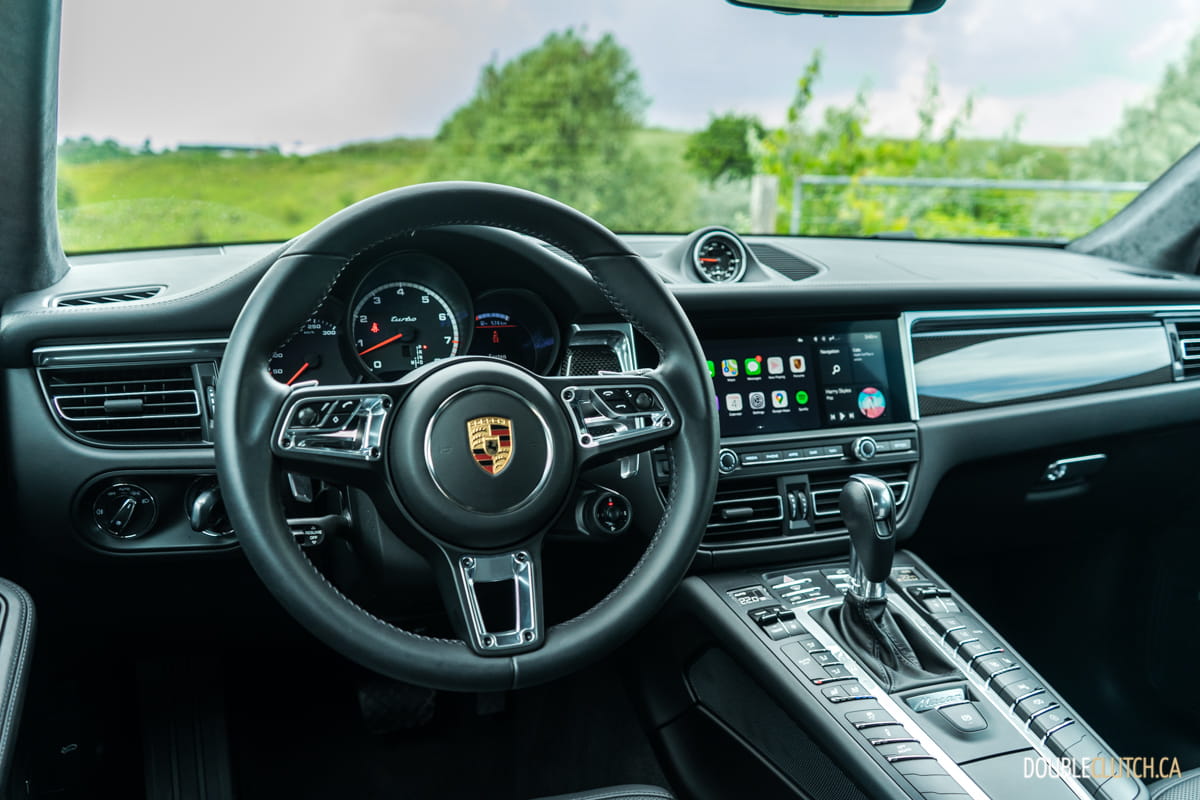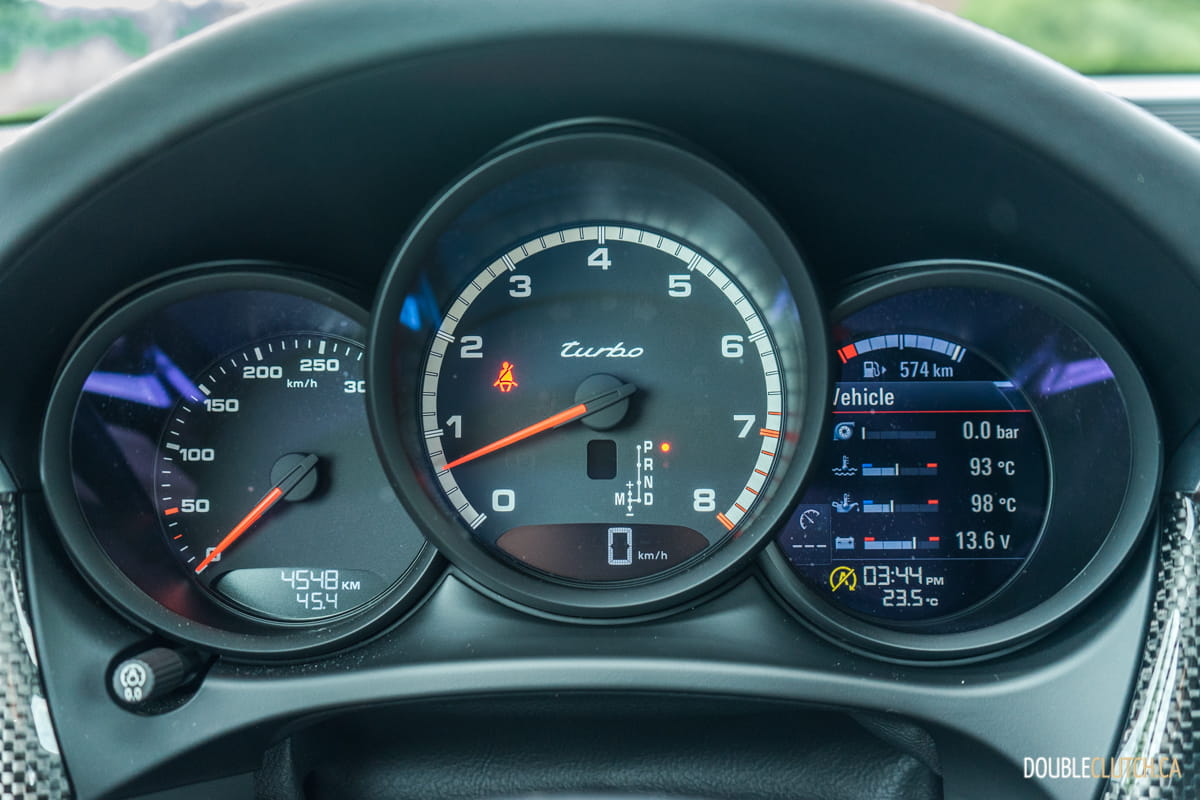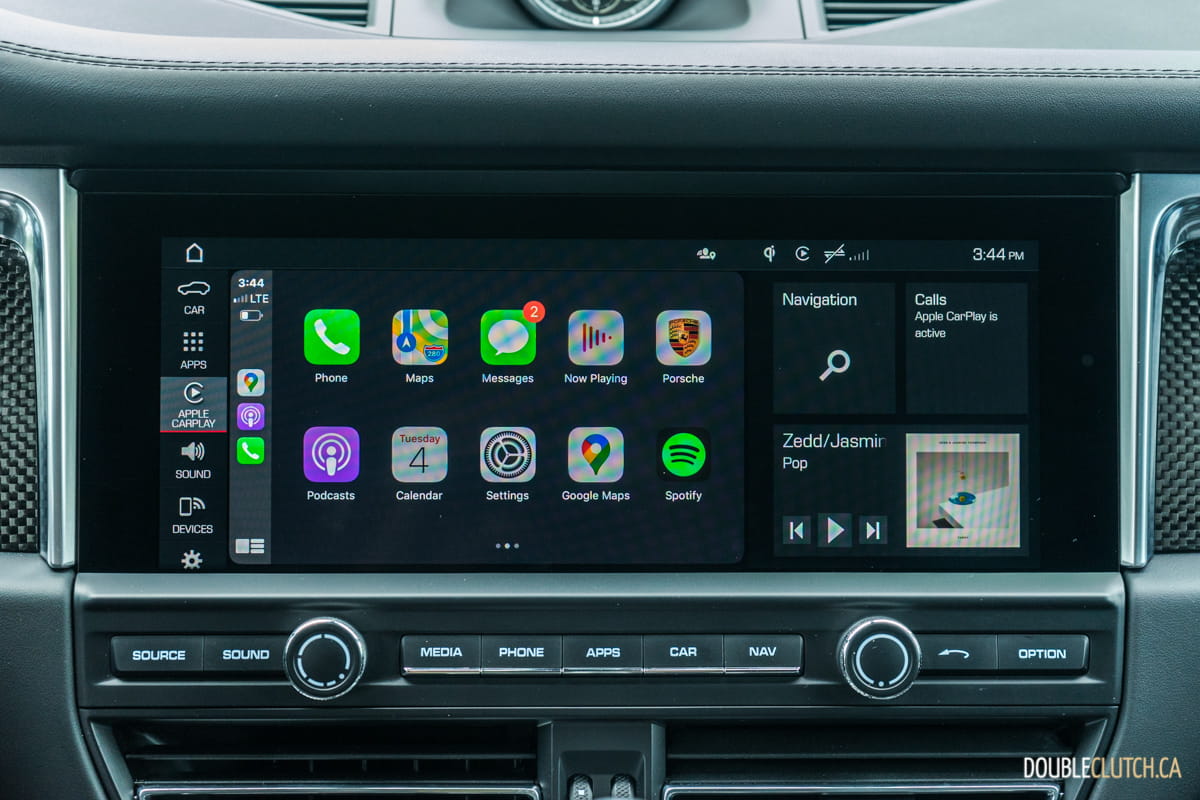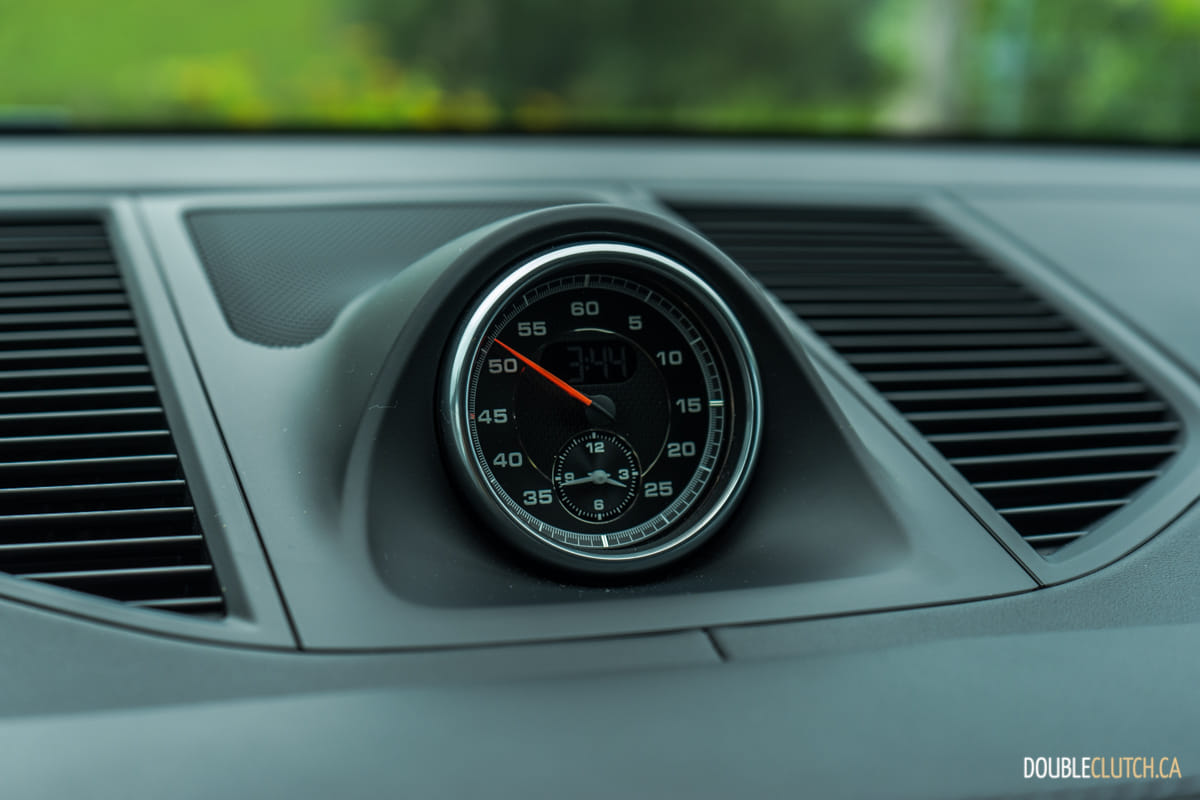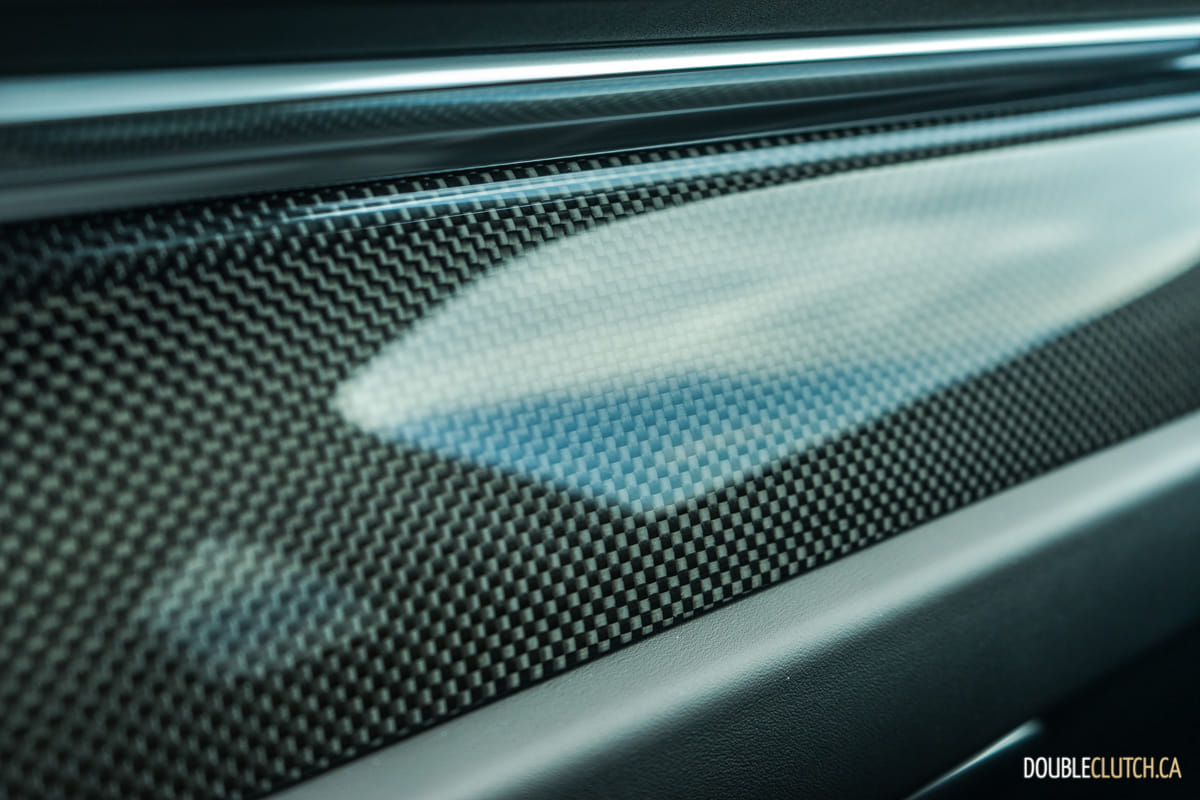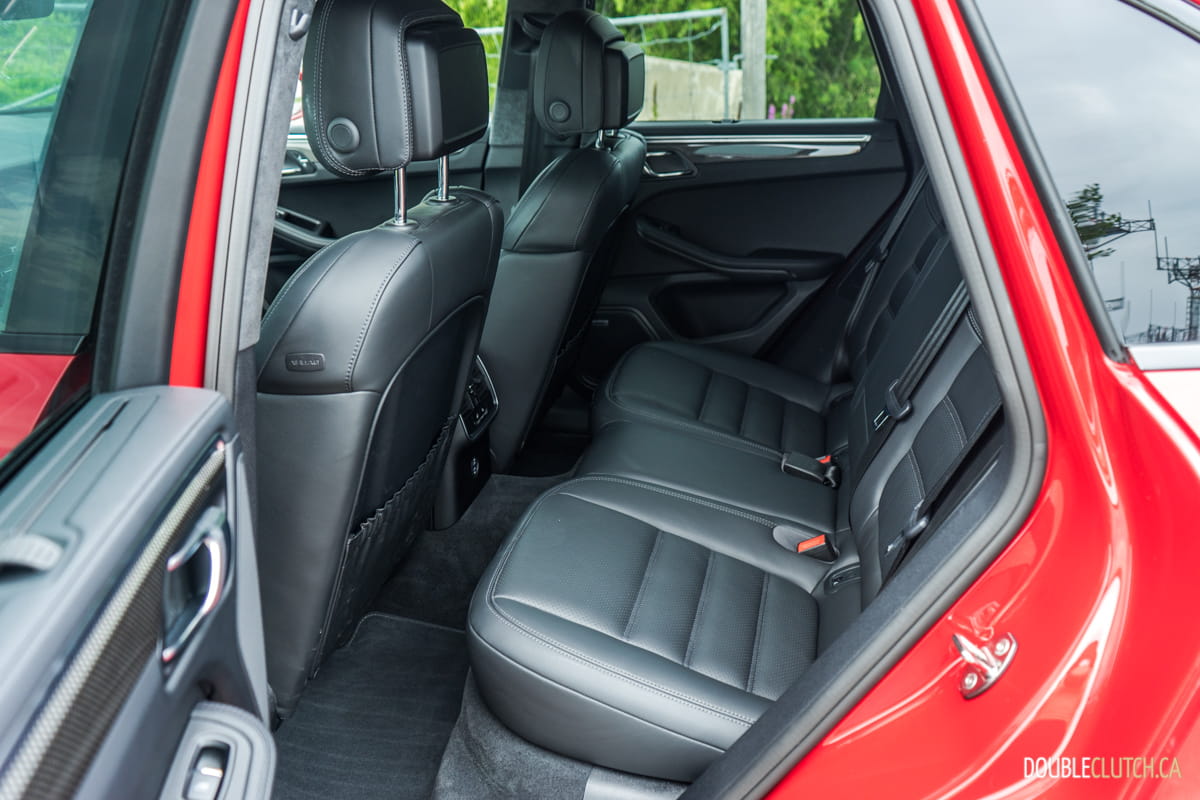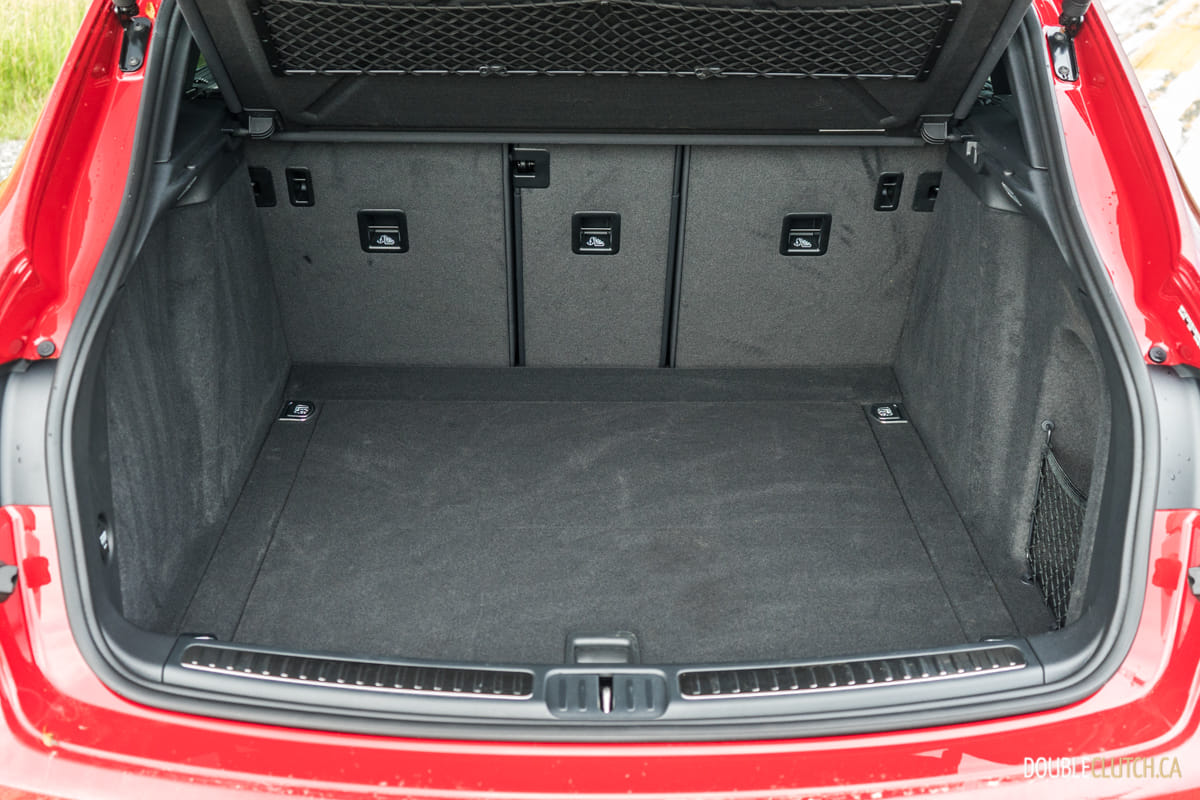For a segment that’s still relatively new, there seems to be a plethora of options for those looking for a compact performance crossover. The last two years alone have seen debuts from BMW, Mercedes-AMG, and Jaguar. Even Alfa Romeo has decided to dip into the proverbial profit pot, with the boisterous Stelvio Quadrifoglio. The Germans were one of the first to the game, and after a mid-cycle refresh last year, we saw it fit to spend a week with an old favourite, the 2020 Porsche Macan Turbo.
Painted in the bright Carmine Red, our Macan Turbo test vehicle is a looker. Its lines are still fresh and strikingly handsome even six whole years into its model cycle. The refresh for 2019 added some updated styling cues, and most noticeable is the solid rear light bar. The Macan’s profile makes for a real looker, and is likely the one that will age the best among its rivals. The 21-inch RS Spyder Design wheels tidy up the looks beautifully, and Turbo models further differentiate themselves from the standard spoiler on the liftgate, slightly modified fascia and side skirts.
The real objective of the Macan Turbo over its lesser variants is performance. It gets the 2.9-liter twin-turbocharged V6 from the Panamera and Cayenne S (reviewed here). Its 434 horsepower at 6,600RPM and 405 lb-ft. at 1,800RPM is a substantial bump over the Macan S, and Porsche Cars Canada claims a 0-100km/h sprint time of 4.3 seconds. The Turbo is fast, and the seven-speed PDK transmission remains a benchmark for dual-clutch setups across the industry. It changes gears instantaneously and rounds out the powertrain nicely, and this immediacy gets a shot of adrenaline when the rotary dial on the steering wheel is turned into Sport or Sport Plus modes.
Porsche Surface Coated Brakes (PSCB) are standard, with 15.4-inch tungsten-coated front rotors with six-piston calipers. Out back, 14-inch rotors have a single-piston caliper, and this package comes together for immense stopping power. Out of all players in this segment, the Macan Turbo remains the most eager to be pushed through winding roads, with great feedback through the steering wheel and a chassis that rotates without fuss. Despite pushing 4,400 pounds, the Macan drives much smaller than its weight would suggest, a feat that’s not easy to accomplish for a crossover of any size. The aluminum suspension components and well-tuned chassis make for exceptional ride quality, with the compliant firmness expected from a Porsche.
The interior is a bit of a mixed bag – while it’s brilliantly put together, the console is confusing at first with many, many buttons. Of course, if it were all integrated into the touchscreen, it would be criticized for being distracting as well. There’s seemingly a button for every function, and the climate control isn’t as easy to navigate as it should be. Porsche’s wide touchscreen houses the infotainment system, and it is compatible with Apple CarPlay on vehicles equipped with this option. It’s easy to navigate, but despite the console populated with buttons, there is no dedicated track skip button.
On the other hand, the seats are superbly comfortable, and the heating and ventilation functions are very strong. There is plenty of space for taller front occupants, and even with the raked roofline, rear passengers will minimally complain. The BMW X3 M’s boxier styling makes for a bit more accessibility, but unless you’re regularly transporting adults in the rear, it won’t matter. Fold down the rear seats and the Porsche will swallow 1,503-liters of cargo, and with the seats up, 498-liters. The keen will notice that this 498-liter capacity is identical to the new Cayenne Coupé.
The Macan Turbo itself starts at $94,200, over the $57,800 base model. Our fairly loaded test vehicle was stacked with a series of options. The 21-inch RS Spyder wheels are absolutely necessary for the appearance, an extra $1,900. Carmine Red is an additional $3,560, and the full leather interior is $2,150. The Premium Plus Package at $4,630 adds keyless go, Apple CarPlay, a panoramic sunroof, seat ventilation, and and lane keep assist. Add on some miscellaneous doodads like a carbon fiber interior package, adaptive cruise control, and a heated windshield, and you’re at our tester’s sticker price of $117,760.
At this price the Macan Turbo is still competitive, but a few thousand dollars more than the Mercedes-AMG GLC 63 S (reviewed here), as well as the fully loaded BMW X3 M Competition and Alfa Romeo Stelvio Quadrifoglio. Despite the similarities and the fact that they all play within the same segment, there are some stark differences between the Macan and the others. For one, the Stelvio and GLC 63 S all put out substantially more horsepower, and the latter has the soundtrack of a V8. The Macan has more precision and sharpness, and its driving dynamics are reflective of the Porsche brand ethos.
With observed fuel efficiency over our test week of 13.1L/100km on 91-octane premium fuel, the 2020 Porsche Macan Turbo is an exceptional crossover. For the buyer looking for a practical year-round machine with plenty of personality, it’s impossible to go wrong with it. It’s also a great pick for the 911 or Boxster S owner who needs to swap for four doors and family practicality, because the Macan Turbo offers sufficient performance and ample power for those who crave it. No matter how you look at it, the Macan’s heart is Porsche through and through, and don’t let anyone convince you otherwise.





